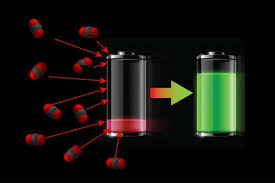
Breaking News
 What They Don't Tell You About Autoimmune Disorders
What They Don't Tell You About Autoimmune Disorders
 Jim Lovell, commander of NASA's Apollo 13 moon mission, dies at 97
Jim Lovell, commander of NASA's Apollo 13 moon mission, dies at 97
 Powerful new oral painkiller blocks signals without sedation or addiction
Powerful new oral painkiller blocks signals without sedation or addiction
 Tesla Gets a Texas Rideshare Network License
Tesla Gets a Texas Rideshare Network License
Top Tech News
 3D printing set to slash nuclear plant build times & costs
3D printing set to slash nuclear plant build times & costs
 You can design the wheels for NASA's next moon vehicle with the 'Rock and Roll Challenge
You can design the wheels for NASA's next moon vehicle with the 'Rock and Roll Challenge
 'Robot skin' beats human reflexes, transforms grip with fabric-powered touch
'Robot skin' beats human reflexes, transforms grip with fabric-powered touch
 World's first nuclear fusion plant being built in US to power Microsoft data centers
World's first nuclear fusion plant being built in US to power Microsoft data centers
 The mitochondria are more than just the "powerhouse of the cell" – they initiate immune...
The mitochondria are more than just the "powerhouse of the cell" – they initiate immune...
 Historic Aviation Engine Advance to Unlock Hypersonic Mach 10 Planes
Historic Aviation Engine Advance to Unlock Hypersonic Mach 10 Planes
 OpenAI CEO Sam Altman Pitches Eyeball-Scanning World ID to Bankers
OpenAI CEO Sam Altman Pitches Eyeball-Scanning World ID to Bankers
 New 3D-printed titanium alloy is stronger and cheaper than ever before
New 3D-printed titanium alloy is stronger and cheaper than ever before
 What is Unitree's new $6,000 humanoid robot good for?
What is Unitree's new $6,000 humanoid robot good for?
 "No CGI, No AI, Pure Engineering": Watch Raw Footage Of 'Star Wars'-Style Speeder
"No CGI, No AI, Pure Engineering": Watch Raw Footage Of 'Star Wars'-Style Speeder
First Fully Rechargeable Carbon Dioxide Battery is Seven Times More Efficient Than Lithium Ion

Until now, however, scientists have not been able to develop a fully rechargeable prototype, despite their potential to store more energy.
Researchers at the University of Illinois at Chicago are the first to show that lithium-carbon dioxide batteries can be designed to operate in a fully rechargeable manner, and they have successfully tested a lithium-carbon dioxide battery prototype running up to 500 consecutive cycles of charge/recharge processes.
Their findings are published in the journal Advanced Materials.
"Lithium-carbon dioxide batteries have been attractive for a long time, but in practice, we have been unable to get one that is truly efficient until now," said Amin Salehi-Khojin, associate professor of mechanical and industrial engineering at UIC's College of Engineering.



